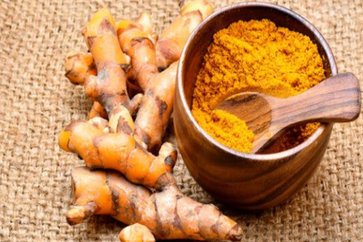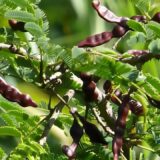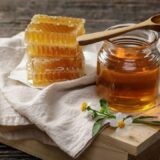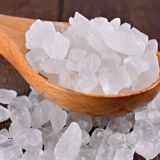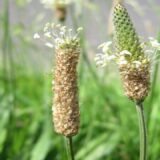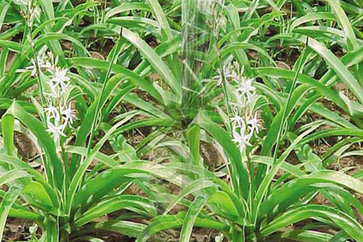Top 20 Herbs for Medicine: Time-Tested Herbs for Healing
For centuries, herbs have been a cornerstone of natural healing and wellness across cultures worldwide. From ancient civilizations to modern-day wellness practices, medicinal herbs have played a crucial role in supporting health and treating a variety of ailments.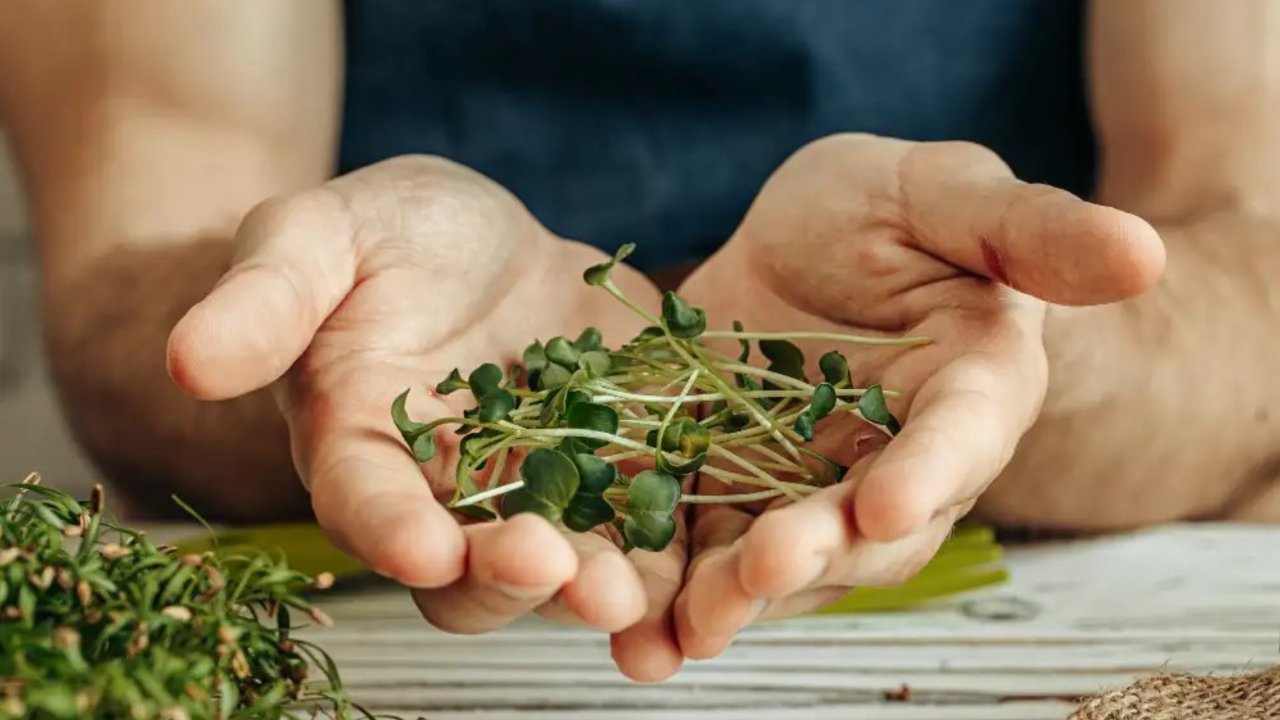
Whether it’s soothing inflammation, boosting immunity, improving digestion, or reducing stress, the healing power of herbs is backed by both tradition and science. Today, many people are turning to nature’s medicine cabinet as a safer, more holistic alternative to synthetic drugs.
Brief History of Herbal Medicine
The use of herbs for medicinal purposes dates back thousands of years, with evidence of their application found in ancient civilizations across the globe. In ancient Egypt, China, and India, herbs played a central role in medicine.
For instance, in ancient Egyptian texts like the Ebers Papyrus (circa 1550 BCE), over 700 different plants were documented for their healing properties.
Traditional Chinese Medicine (TCM) and Ayurveda, both ancient systems of medicine, have long relied on herbs to balance the body’s energy and treat a wide range of diseases.
In the Western world, herbal medicine was also prominent, with figures such as Hippocrates (the father of modern medicine) and Dioscorides, who wrote De Materia Medica (circa 50-70 AD), documenting the healing potential of plants.
As modern pharmaceutical drugs began to develop in the 19th and 20th centuries, the use of medicinal herbs somewhat declined, but their use in traditional and alternative medicine systems has persisted to this day.
Importance of Herbal Medicine in Modern Healthcare
In the 21st century, herbal medicine has gained renewed interest as people seek more natural and holistic approaches to healthcare.
With increasing concerns over the side effects and long-term dependency on pharmaceutical drugs, many individuals are turning to herbal remedies for preventive care and the treatment of chronic conditions.
Herbal medicine plays an important role in modern healthcare, especially in complementary and integrative therapies. It offers a more personalized and natural alternative to managing ailments like anxiety, digestive disorders, skin conditions, and chronic pain.
In addition, research into medicinal herbs has increased, validating many of the benefits that have been used for centuries.
Scientific studies have demonstrated the effectiveness of numerous herbs in treating conditions such as inflammation, high blood pressure, immune system dysfunction, and more.
The integration of traditional knowledge with modern scientific understanding continues to shape the role of herbal medicine in modern healthcare.
Top 20 Herbs for Medicine
Here are the top 20 medicinal herbs, each known for its unique healing properties and potential to support overall health.
These herbs have been used for centuries in various traditional medicine systems across the world. From promoting digestive health to reducing inflammation, supporting the immune system, and enhancing mental well-being, these herbs offer a natural and holistic approach to wellness.
1. Ashwagandha (Withania somnifera)
Ashwagandha is an adaptogenic herb that has been used in Ayurveda for thousands of years. Native to India and North Africa, it is known for its ability to help the body adapt to stress and promote overall well-being. Ashwagandha contains withanolides, which have anti-inflammatory and antioxidant effects, and it is often used to boost energy, reduce anxiety, and improve stamina.
- Traditional Uses: Ashwagandha is commonly used to reduce stress, anxiety, and fatigue. It is also used to enhance cognitive function, improve sleep, and support the immune system. In Ayurvedic medicine, it is considered a rejuvenating herb that can improve vitality and longevity.
- How to Use: Ashwagandha is most commonly consumed in powder or capsule form. It can be mixed into smoothies, taken with warm milk, or consumed with honey. It is also available as a tincture or in tablet form for more concentrated doses.
2. Echinacea (Echinacea purpurea)
Echinacea is a flowering plant from the daisy family, native to North America. It has become widely known for its immune-boosting properties and is one of the most popular herbs in the world for treating colds and flu. Echinacea contains compounds such as alkylamides, flavonoids, and phenolic acids that are believed to support the immune system and fight infections. It is commonly used in herbal preparations to increase white blood cell activity.
- Traditional Uses: Traditionally, Echinacea is used to strengthen the immune system, reduce inflammation, and treat infections. It is most commonly used to prevent and shorten the duration of upper respiratory infections, such as colds and flu. Echinacea has also been used in traditional medicine to treat wounds, skin infections, and urinary tract infections.
- How to Use: Echinacea is typically consumed as a tea, tincture, or in capsule or tablet form. It is most effective when taken at the onset of illness, and some experts recommend combining it with other immune-boosting herbs such as garlic or elderberry.
3. Lavender (Lavandula angustifolia)
Lavender is a fragrant herb that belongs to the mint family, known for its sweet, floral aroma and beautiful purple flowers. Native to the Mediterranean, it has been used for thousands of years for its therapeutic properties. Lavender contains essential oils that provide a calming and soothing effect on the body and mind. It is especially prized for its ability to alleviate stress, anxiety, and sleep disturbances.
- Traditional Uses: Lavender has a wide range of traditional uses. It is primarily used for relaxation, stress reduction, and improving sleep quality. It has also been used to treat headaches, indigestion, and respiratory issues. Lavender is a common remedy for skin conditions, such as burns, wounds, and eczema. It is also believed to have antimicrobial properties and is sometimes used in cleaning products.
- How to Use: Lavender is most commonly used in aromatherapy, either through essential oils in diffusers or applied topically (diluted with a carrier oil) for relaxation and skin healing. It can also be consumed as a tea or used in bath water. Lavender oil is widely used for topical applications, including for relieving headaches and tension.
4. Peppermint (Mentha piperita)
Peppermint is a hybrid plant, a cross between watermint and spearmint, and is one of the most popular herbs worldwide for its refreshing and cooling properties. It contains menthol, a compound that gives peppermint its signature minty aroma and flavor. Peppermint has been used for thousands of years in both culinary and medicinal practices. It is particularly known for its positive effects on digestion and its ability to soothe the gastrointestinal tract.
- Traditional Uses: Peppermint is used primarily for digestive issues, such as nausea, bloating, and indigestion. It is often employed to relieve headaches, reduce muscle pain, and improve mental clarity. Peppermint is also used for respiratory conditions such as congestion, sinusitis, and coughs due to its cooling, decongestant effect.
- How to Use: Peppermint can be consumed as a tea, either fresh or dried, to help with digestion and nausea. It is commonly used as an essential oil, either inhaled directly or applied topically for muscle pain relief. Peppermint oil can also be used in capsules for digestive support or applied to the temples for headache relief.
5. Turmeric (Curcuma longa)
Turmeric is a bright yellow spice derived from the root of the Curcuma longa plant, native to Southeast Asia. The active compound in turmeric, curcumin, is known for its potent anti-inflammatory, antioxidant, and anticancer properties. Turmeric has been used in traditional Indian medicine, especially Ayurveda, for thousands of years to treat a wide range of conditions. Its healing properties are well recognized today in both conventional and alternative medicine.
- Traditional Uses: Turmeric is used to treat conditions such as arthritis, digestive issues, liver disorders, and skin conditions. It is also used as a detoxifying agent and is thought to promote heart health by improving blood circulation. In Ayurvedic practices, turmeric is considered a potent anti-inflammatory and is used to balance the body’s doshas (energies).
- How to Use: Turmeric is most commonly consumed as a spice in cooking, especially in curry dishes, smoothies, and teas. To enhance curcumin absorption, it is often combined with black pepper (which contains piperine, an absorption-enhancing compound). Turmeric can also be taken in capsule or extract form for concentrated doses of curcumin.
6. Ginger (Zingiber officinale)
Ginger is a rhizome, or underground stem, of the ginger plant, known for its spicy, warm flavor and numerous medicinal benefits. Native to Southeast Asia, it has been used for over 2,000 years in both culinary and medicinal practices. Ginger contains bioactive compounds, such as gingerol, which contribute to its potent anti-inflammatory and antioxidant properties. It is often used to alleviate digestive discomfort, nausea, and muscle pain.
- Traditional Uses: Ginger is most widely used to treat nausea, especially from motion sickness or morning sickness in pregnancy. It is also commonly used for digestive problems, such as indigestion, bloating, and gas. Ginger has anti-inflammatory properties that help reduce pain, making it useful for arthritis and muscle soreness. Additionally, ginger is sometimes used as a natural remedy for respiratory issues such as colds and coughs.
- How to Use: Ginger can be consumed fresh, dried, or powdered. It is commonly used in teas, smoothies, or added to cooking. Ginger oil can also be used topically for pain relief, or it can be consumed in capsule or extract form for more potent effects.
7. Garlic (Allium sativum)
Garlic is a bulbous plant that has been a staple in both cooking and traditional medicine for centuries. It contains sulfur compounds, particularly allicin, which are believed to be responsible for its many medicinal benefits. Garlic has strong antimicrobial, anti-inflammatory, and antioxidant properties. It is used to support cardiovascular health, improve immune function, and reduce the risk of various chronic diseases.
- Traditional Uses: Garlic is traditionally used for its cardiovascular benefits, including lowering blood pressure, cholesterol levels, and improving circulation. It is also used to treat respiratory infections, digestive issues, and to boost immunity. In many cultures, garlic has been used as a remedy for colds, coughs, and even for wound healing.
- How to Use: Garlic can be consumed raw, cooked, or in supplement form. The active compound allicin is most potent in raw garlic, so it is often crushed or chopped and allowed to sit for a few minutes before consumption. Garlic is also available in oil, capsule, or tincture form for more concentrated doses.
8. Chamomile (Matricaria chamomilla)
Chamomile is a daisy-like flower that has been used for centuries as a gentle remedy for various ailments. There are two common types of chamomile: German chamomile and Roman chamomile, with the former being most commonly used for medicinal purposes. Chamomile contains flavonoids, which are antioxidants that help reduce inflammation and promote relaxation.
- Traditional Uses: Chamomile is most commonly used to promote relaxation and alleviate stress and anxiety. It is also frequently used to aid sleep, soothe digestive issues, and treat skin conditions like eczema or rashes. Chamomile has mild sedative effects, which help calm the nervous system and aid in sleep disorders.
- How to Use: Chamomile is most commonly consumed as a tea, where the flowers are steeped in hot water to extract their soothing properties. It can also be applied topically in creams or ointments for skin irritation. Chamomile essential oil is often used in aromatherapy to reduce stress and promote restful sleep.
9. Ashwagandha (Withania somnifera)
Ashwagandha is a small shrub native to India and Africa, often referred to as “Indian ginseng.” It is a powerful adaptogen, meaning it helps the body manage stress and restore balance. The root of the plant contains withanolides, compounds that have been shown to reduce inflammation, support cognitive function, and improve energy levels.
- Traditional Uses: Ashwagandha has been used in Ayurveda for centuries to treat a variety of conditions, including anxiety, stress, insomnia, and low energy levels. It is also used to improve cognitive function, reduce inflammation, and support reproductive health. Ashwagandha is considered a tonic for overall well-being and vitality.
- How to Use: Ashwagandha is most commonly consumed in powder or capsule form, although it can also be made into a tea. It is important to note that it is best used as part of a long-term regimen for optimal stress-reducing benefits.
10. Holy Basil (Ocimum sanctum)
Holy Basil, also known as Tulsi, is a revered herb in Ayurveda, known for its ability to balance the body’s energies and promote overall well-being. It contains essential oils and bioactive compounds, such as eugenol, which have anti-inflammatory, antioxidant, and adaptogenic properties. Holy basil is considered sacred in Hinduism and is often planted around temples and homes for spiritual and medicinal purposes.
- Traditional Uses: Holy basil is traditionally used to support the immune system, reduce stress, enhance mental clarity, and improve respiratory health. It is also used to treat digestive issues, support heart health, and alleviate symptoms of colds and flu.
- How to Use: Holy basil can be consumed as a tea, tincture, or in capsule form. The leaves can also be chewed or added to food for a more direct benefit. Additionally, holy basil essential oil is used in aromatherapy for its calming effects.
11. Rosemary (Rosmarinus officinalis)
Rosemary is a fragrant evergreen shrub native to the Mediterranean region. It has needle-like leaves and a distinctive aroma that is commonly used in both culinary and medicinal practices. Rosemary contains antioxidants such as rosmarinic acid, which have anti-inflammatory and antimicrobial effects. This herb is well-known for its stimulating properties and ability to enhance memory and cognitive function.
- Traditional Uses: Rosemary has been used to improve memory, concentration, and mental clarity. It is also used to relieve digestive issues such as indigestion, bloating, and cramping. Rosemary oil is used to stimulate hair growth and alleviate scalp conditions like dandruff. Additionally, rosemary is known for its antimicrobial and anti-inflammatory properties, making it useful for treating respiratory issues, headaches, and pain relief.
- How to Use: Rosemary can be used as a tea, in cooking, or in essential oil form. The oil can be applied topically to the scalp to promote hair growth or diluted and massaged into sore muscles. Rosemary tea can be made by steeping the leaves in hot water and drinking it for digestive and cognitive support.
12. Lemon Balm (Melissa officinalis)
Lemon balm is a lemon-scented herb in the mint family, native to Europe and Asia. Known for its calming properties, lemon balm is often used to reduce anxiety, promote relaxation, and improve sleep. It contains flavonoids and phenolic compounds that have antiviral, antioxidant, and anti-inflammatory effects.
- Traditional Uses: Lemon balm has a long history of use in treating anxiety, insomnia, and digestive issues such as indigestion and bloating. It has also been used to alleviate symptoms of the common cold and flu, especially for relieving congestion and cough. In folk medicine, lemon balm is also used to enhance mood and promote mental clarity.
- How to Use: Lemon balm is most commonly consumed as a tea, made by steeping fresh or dried leaves in hot water. It can also be used in capsules or as an essential oil for aromatherapy or topical application to reduce stress and improve sleep.
13. Nettle (Urtica dioica)
Nettle, also known as stinging nettle, is a perennial herb with jagged green leaves and stems covered in tiny, stinging hairs. Despite its reputation for causing skin irritation, nettle has many beneficial uses in medicine. It is rich in vitamins A, C, K, and B, as well as minerals like iron, calcium, and magnesium. Nettle has been traditionally used as a blood purifier and as an herbal remedy for joint pain and urinary tract issues.
- Traditional Uses: Nettle is often used as a remedy for arthritis and joint pain due to its anti-inflammatory effects. It is also used to support urinary health, improve kidney function, and detoxify the body. Additionally, nettle is a common remedy for conditions like hay fever, anemia, and high blood pressure.
- How to Use: Nettle is commonly consumed as a tea or in capsules. It can also be added to soups, stews, or smoothies for its nutritional benefits. Topically, nettle can be applied in poultices or used in skincare preparations to help with eczema or acne.
14. Sage (Salvia officinalis)
Sage is a hardy perennial herb with a strong, aromatic flavor. It is native to the Mediterranean region and has been used both as a culinary herb and for medicinal purposes for centuries. Sage contains antioxidants, such as flavonoids and phenolic acids, that have anti-inflammatory, antimicrobial, and memory-enhancing properties.
- Traditional Uses: Sage is traditionally used to improve memory and cognitive function, making it a common remedy for mental fatigue and cognitive decline. It has also been used to treat sore throats, indigestion, and to reduce inflammation. Sage has antimicrobial properties, which make it effective for treating oral health issues like gingivitis and bad breath.
- How to Use: Sage can be consumed as a tea, used as a seasoning in cooking, or applied as an essential oil for topical use. Sage can also be used as a mouthwash or gargle to treat throat infections and improve oral hygiene.
15. Yarrow (Achillea millefolium)
Yarrow is a flowering herb with feathery leaves and small, white or pink flowers. It is native to Europe and parts of Asia and has been used for centuries for its healing properties. Yarrow contains alkaloids, flavonoids, and tannins, which contribute to its ability to reduce inflammation, stop bleeding, and support immune function.
- Traditional Uses: Yarrow has been traditionally used to stop bleeding and promote wound healing. It is also used to reduce fever and alleviate cold and flu symptoms. Yarrow is known to ease digestive problems, including indigestion and bloating, and can relieve menstrual cramps and other gynecological issues.
- How to Use: Yarrow can be applied topically to wounds or cuts as a poultice, or consumed as a tea for internal ailments such as digestive issues or fever. It is also used in tincture form to treat inflammation and support immune function.
16. Cinnamon (Cinnamomum verum)
Cinnamon is a spice made from the inner bark of trees in the genus Cinnamomum, primarily native to Sri Lanka. It is known for its warm, sweet flavor and is commonly used in cooking and baking. Cinnamon contains compounds like cinnamaldehyde, which have antioxidant, anti-inflammatory, and antimicrobial effects.
- Traditional Uses: Cinnamon has been used to regulate blood sugar levels, making it particularly useful for people with diabetes or those at risk. It also supports digestion by improving circulation to the digestive tract and alleviating bloating and indigestion. Cinnamon has antimicrobial properties, which make it effective for treating colds and flu, as well as improving oral health.
- How to Use: Cinnamon can be consumed in teas, smoothies, or added to baked goods and cooking. It is also available in capsule or powder form for medicinal use. Cinnamon essential oil can be used topically for muscle pain relief or inhaled to promote respiratory health.
17. Dandelion (Taraxacum officinale)
Dandelion is a common herb with bright yellow flowers and deeply serrated leaves. It is widely regarded as a weed, but dandelion has been used for centuries as a medicinal plant. The entire plant, from root to flower, is edible and contains vitamins A, C, and K, as well as minerals like potassium and iron. Dandelion is known for its detoxifying effects, particularly on the liver and kidneys.
- Traditional Uses: Dandelion is used to detoxify the liver and kidneys and support digestion. It is commonly used as a mild diuretic to promote urinary health and prevent water retention. Dandelion has also been used to treat skin conditions, such as acne and eczema, and to promote healthy skin by improving blood circulation.
- How to Use: Dandelion can be consumed as a tea, in salads, or blended into smoothies. The root can be roasted and used as a coffee substitute. Dandelion is also available in capsule form or as a tincture.
18. Fenugreek (Trigonella foenum-graecum)
Fenugreek is a herb with aromatic seeds that are often used as a spice in cooking. Native to the Mediterranean and Asia, fenugreek has been used in traditional medicine for thousands of years. The seeds contain alkaloids and saponins, which give fenugreek its medicinal properties. Fenugreek is commonly used to support lactation in breastfeeding mothers and to improve digestion.
- Traditional Uses: Fenugreek is widely known for its ability to enhance milk production in breastfeeding mothers. It is also used to regulate blood sugar levels, reduce cholesterol, and support digestive health. Fenugreek is believed to have anti-inflammatory, antioxidant, and antimicrobial properties, which contribute to its overall health benefits.
- How to Use: Fenugreek seeds can be used in cooking, added to smoothies, or taken in capsule or powder form. Fenugreek tea is another popular way to consume the herb for digestive and lactation support.
19. Aloe Vera (Aloe barbadensis miller)
Aloe Vera is a succulent plant that has been used for centuries for its medicinal and cosmetic benefits. The gel inside its thick, fleshy leaves is rich in vitamins, minerals, and amino acids, making it particularly useful for soothing and healing skin conditions. Aloe Vera is commonly used to treat burns, wounds, and skin irritation, but it also has internal benefits for digestive health.
- Traditional Uses: Aloe Vera is best known for its topical applications in treating burns, cuts, rashes, and other skin irritations. It also supports digestive health by soothing the digestive tract and relieving constipation. Aloe Vera is sometimes used to detoxify the body and improve hydration.
- How to Use: Aloe Vera gel can be applied directly to the skin to treat burns, cuts, or irritation. Aloe Vera juice can be consumed for digestive support or as a detoxifying agent. Aloe Vera is also available in creams, ointments, and supplements for topical or internal use.
20. Ginseng (Panax ginseng)
Ginseng is a perennial herb native to East Asia, with a long, fleshy root that is prized for its medicinal properties. The root has been used in traditional Chinese medicine (TCM) for over 2,000 years, and its active compounds, known as ginsenosides, are thought to contribute to its healing effects. Ginseng is known for being an adaptogen, meaning it helps the body adapt to stress and restore balance. It is often referred to as the “king of herbs” for its many health benefits.
- Traditional Uses: Ginseng is commonly used to improve physical endurance, increase energy levels, enhance cognitive function, and reduce mental fatigue. It has also been used to treat sexual dysfunction, support the immune system, and combat stress. Ginseng is considered a tonic for overall vitality and longevity.
- How to Use: Ginseng is consumed in many forms: tea, capsules, powders, extracts, and sometimes as a fresh root. It is most commonly taken in the morning to avoid interfering with sleep patterns, though its use in traditional remedies often involves long-term consumption for optimal results.
Medicinal herbs have been a cornerstone of healthcare for thousands of years, offering natural remedies for a wide range of ailments. From ancient civilizations to modern times, herbal medicine has evolved, integrating traditional wisdom with scientific research to validate its healing potential.

